The famous Russia's Bolshoi Theatre opened in Moscow on January 18, 1825. It is one of the world’s most renowned and largest opera and ballet theaters. Throughout its history, the Bolshoi Theatre was destroyed by fire, restored and reconstructed several times, but it has always been a landmark of Russia and Moscow, as well as a center of the Russian cultural life.
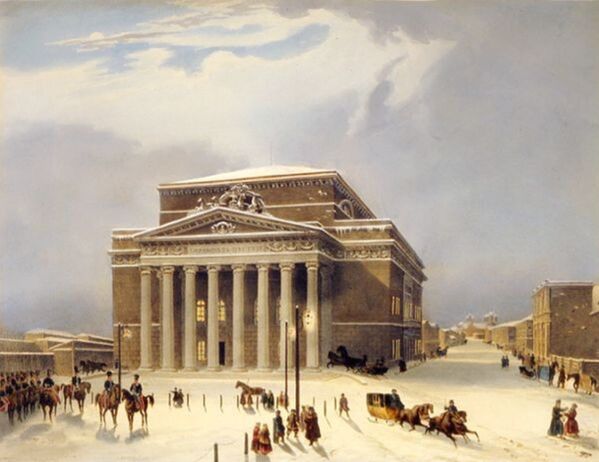
1/16
© East News / Arnout/ Fine Art Images
The initial company of the future Bolshoi Theatre was founded on March 17, 1776. It acquired the Petrovka Theater and began producing plays and operas in December, 1780.
Above: The old Bolshoi Theatre in the early 19th century.
Above: The old Bolshoi Theatre in the early 19th century.
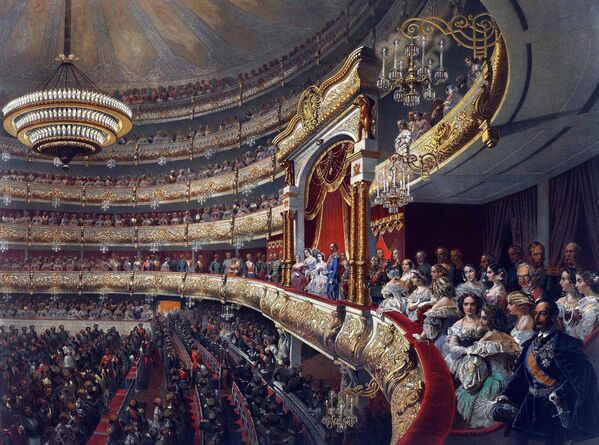
2/16
© East News / Universal History Archive/Universal Images Group
On October 8, 1805 the building was destroyed by fire, it was rebuilt and finished on April 13, 1808 with the opening of the New Arbat Imperial Theater, which was ruined during the French invasion of Moscow in 1812.
Above: Tsar Alexander II attending a performance at the Bolshoi Theatre, 1856.
Above: Tsar Alexander II attending a performance at the Bolshoi Theatre, 1856.
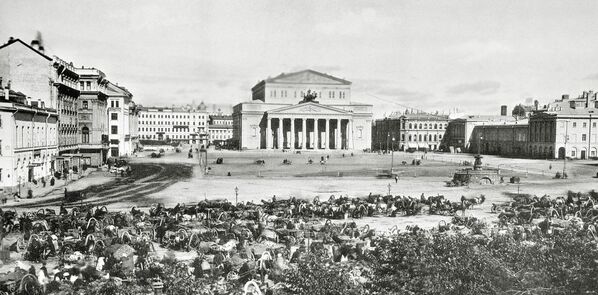
3/16
© East News / Archive Photos/ Image State
The current theater was built on the Theatre Square between 1821 and 1824 and was designed by architect Andrei Mikhailov.
Above: Theatre Square, Moscow, Russia, 1880s.
Above: Theatre Square, Moscow, Russia, 1880s.
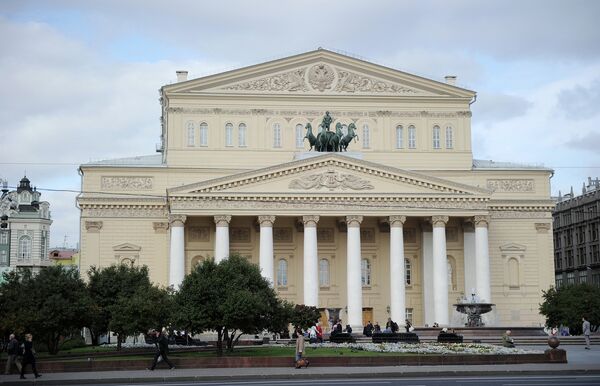
The theater was opened on January 18, 1825 with a presentation of the Prologue "The Triumph of the Muses" by Аlexei Verstovsky and Аlexander Alyabev and a performance of Fernando Sor’s ballet "Cendrillon".
Above: People pass by the Bolshoi Theatre in Moscow, on September 27, 2011.
Above: People pass by the Bolshoi Theatre in Moscow, on September 27, 2011.
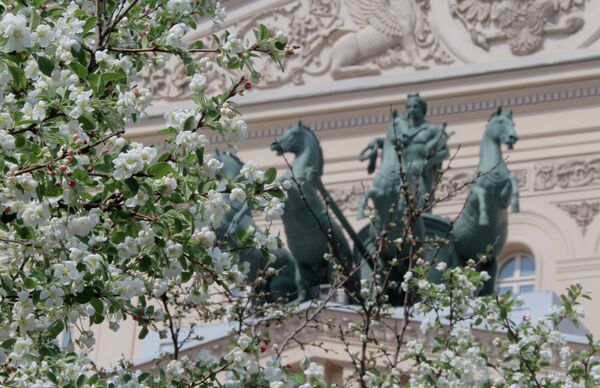
Initially, the Bolshoi Theatre presented only Russian works, but foreign composers were added to the repertoire in 1840.
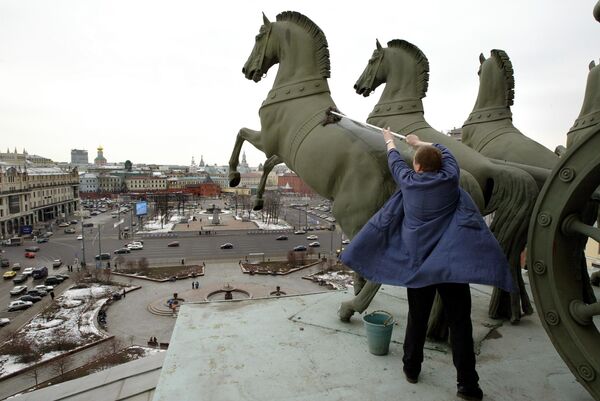
In 1843, the theater underwent a large-scale reconstruction using a design by architect Alexander Nikitin, but in 1853 a fire caused a serious damage to the building and Alberto Cavos carried out a further reconstruction. On August 20, 1856 the Bolshoi Theatre reopened.
Above: A worker cleans the Quadriga statue by Russian sculptor Pyotr Klodt, created in 1856, on top of the building of the Bolshoi Theatre in Moscow, in April 2003.
Above: A worker cleans the Quadriga statue by Russian sculptor Pyotr Klodt, created in 1856, on top of the building of the Bolshoi Theatre in Moscow, in April 2003.
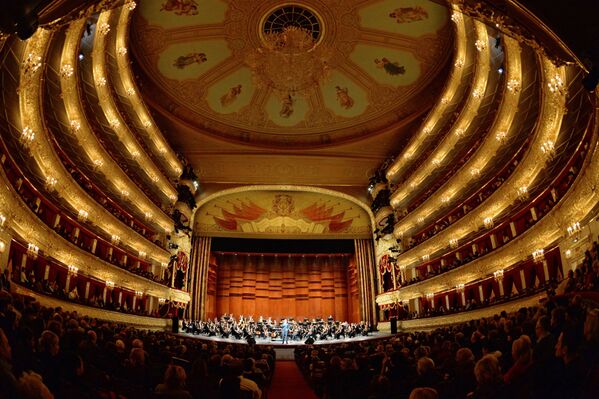
On December 7, 1919 the venue was renamed the State Academic Bolshoi Theatre. However, a few days later an unsuccessful attempt to shut the theater entirely was made.
Above: Interior view of the Bolshoi Theatre of Russia in Moscow.
Above: Interior view of the Bolshoi Theatre of Russia in Moscow.
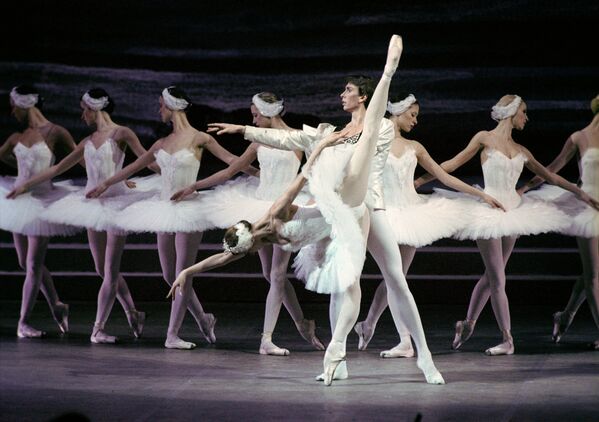
A new stage for the Bolshoi Theatre, called the New Stage, went into service on November 29. It was constructed left to the main stage. Together with auxiliary buildings, the New Stage forms a single theater complex – the Bolshoi Theatre of Russia.
Above: A scene from the Swan Lake ballet. The gala concert was dedicated to the 225th anniversary of the State Academic Bolshoi Theatre of Russia.
Above: A scene from the Swan Lake ballet. The gala concert was dedicated to the 225th anniversary of the State Academic Bolshoi Theatre of Russia.

From July 2005 to October 2011, the Bolshoi Theatre was closed for restoration. Before it had undergone many restorations, but none as major as this. The renovation included an improvement in acoustics and the restoration of the original décor.
Above: Ballet dancers rehearse "The Sleeping Beauty" on September 20, 2011 at the Bolshoi Theatre in Moscow.
Above: Ballet dancers rehearse "The Sleeping Beauty" on September 20, 2011 at the Bolshoi Theatre in Moscow.
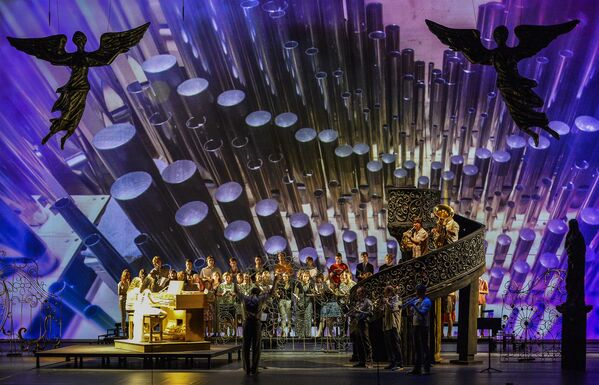
On October 28, 2011 the theater re-opened with a concert featuring renowned international artists and opera companies. The first opera staged after the restoration was "Ruslan and Lyudmila".
Above: The Bolshoi Theatre organ presentation concert in Moscow.
Above: The Bolshoi Theatre organ presentation concert in Moscow.

Currently, the Bolshoi Ballet and Bolshoi Opera are amongst the oldest and most prominent ballet and opera companies in the world.
Above: Pavel Dmitrichenko as Tsar Ivan IV of Russia in a scene from the new production of Sergei Prokofiev's ballet Ivan the Terrible, staged by Yury Grigorovich at Bolshoi Theatre.
Above: Pavel Dmitrichenko as Tsar Ivan IV of Russia in a scene from the new production of Sergei Prokofiev's ballet Ivan the Terrible, staged by Yury Grigorovich at Bolshoi Theatre.
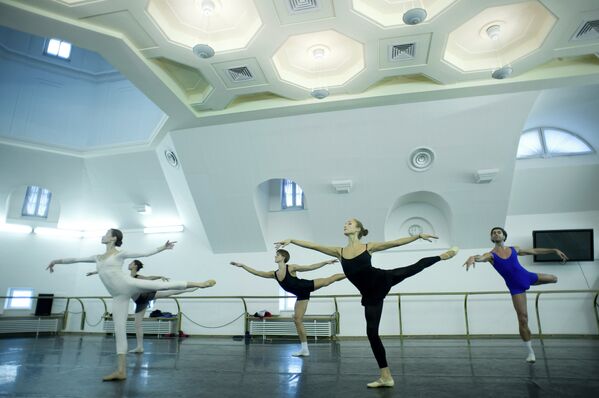
The Bolshoi Ballet is the world’s biggest ballet company having over 200 dancers.
Above: Russian ballet dancers rehearse at the Bolshoi Theatre in Moscow on October 12, 2011.
Above: Russian ballet dancers rehearse at the Bolshoi Theatre in Moscow on October 12, 2011.
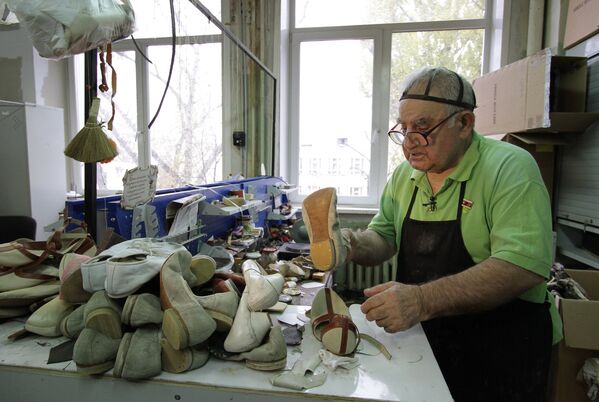
From its beginning, the Bolshoi has been associated with ballet. On March 4 1877, Tchaikovsky’s ballet "Swan Lake" was premiered at the theater. Other notable works from the repertoire include Tchaikovsky's "The Sleeping Beauty" and "The Nutcracker", Adam's "Giselle", Prokofiev's "Romeo and Juliet", and Khachaturian's "Spartacus".
Above: Boris Nisan, the oldest shoemaker at the Bolshoi Theatre in his studio.
Above: Boris Nisan, the oldest shoemaker at the Bolshoi Theatre in his studio.
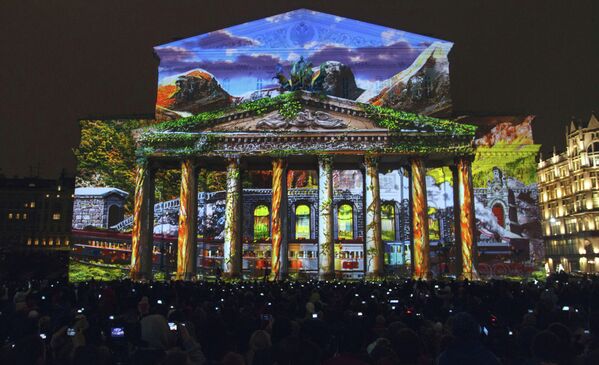
The opera company of the Bolshoi Theatre specializes in the classics of Russian opera including Mussorgsky's "Boris Godunov", Glinka's "A Life for the Tsar", Rimsky-Korsakov's "The Tsar's Bride" and the operas of Tchaikovsky. Many operas by foreign composers are also performed, especially by such Italian masters as Verdi, Rossini and Puccini.
Above: People watch a light show displayed on the facade of the Bolshoi Theatre in Moscow on October 4, 2013, during the "Circle of Light" Third Moscow International Festival.
Above: People watch a light show displayed on the facade of the Bolshoi Theatre in Moscow on October 4, 2013, during the "Circle of Light" Third Moscow International Festival.
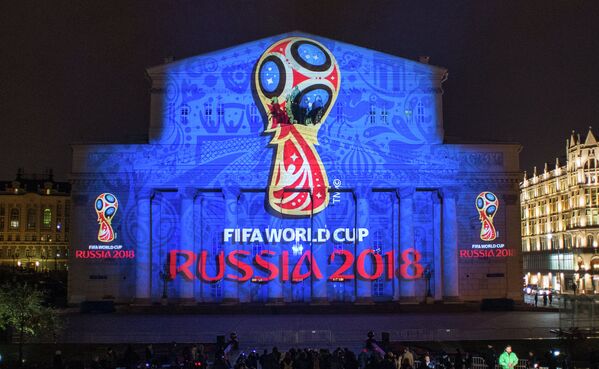
Leonid Sobinov, Antonina Nezhdanova, Galina Vishnevskaya, and dozens of other outstanding opera singers have performed at the Bolshoi Theatre.
Above: The official emblem of the 2018 FIFA World Cup Russia is projected on the facade of the State Academic Bolshoi Theatre, Moscow.
Above: The official emblem of the 2018 FIFA World Cup Russia is projected on the facade of the State Academic Bolshoi Theatre, Moscow.
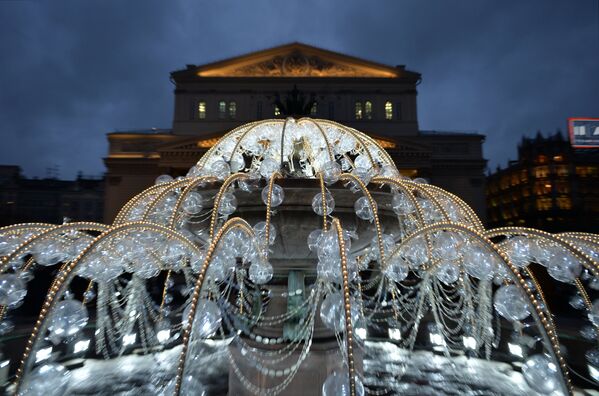
The orchestra of the Bolshoi Theatre is a virtuoso ensemble. It gives occasional classical music concerts and has made recordings. Over the decades, it has toured overseas as the "Bolshoi Theater Orchestra," the "Bolshoi Symphony Orchestra" and, most recently, as the "Bolshoi Orchestra."
Above: The fountain on Theater Square in Moscow.
Above: The fountain on Theater Square in Moscow.

